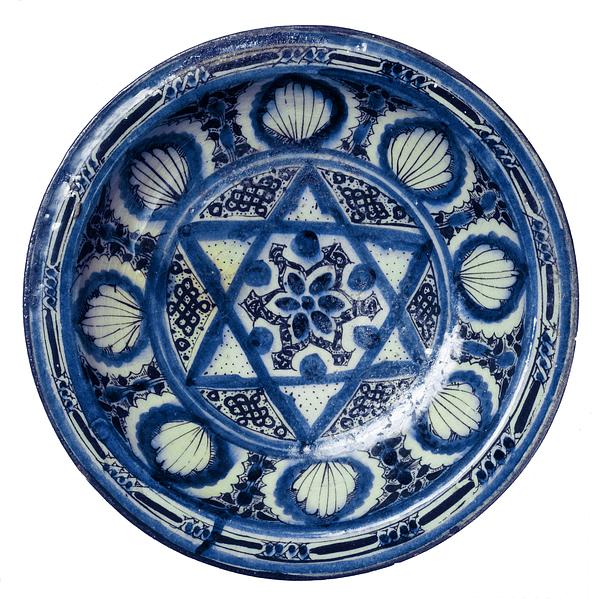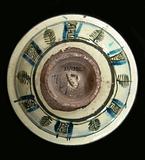Fritware dish, painted in blue and black under a transparent glaze
Syria; 14th century
H: 8.5; Diam: 35 cm
With the Mongols’ destruction of Raqqa in 1259, the city ceased to be the region’s most important center of ceramics production, and Damascus took the lead. High-quality ceramics was also made elsewhere in Syria in the Mamluk period, however, whereas coarser work should probably be attributed to Egypt.
This large dish is unusually well preserved since the glaze on much Syrian pottery becomes iridescent or matte, or completely decomposes.
Though the dish’s central six-pointed star is often associated with Judaism, it is frequently found as an ornament on Islamic works of art, without it having any specific significance.
Inv. no. 21/1992
Published in:
Art islamique dans les collections privées libanaises: exposition organisée par le Musée Nicolas Sursock du 31 mai au 15 juillet 1974, Beyrouth 1974, cat.no. 27;
Kjeld von Folsach, Torben Lundbæk and Peder Mortensen (eds.): Sultan, Shah and Great Mughal: the history and culture of the Islamic world, The National Museum, Copenhagen 1996, cat.no. 128;
Kjeld von Folsach: Art from the World of Islam in The David Collection, Copenhagen 2001, cat.no. 202;
Sheila S. Blair and Jonathan M. Bloom (eds.): Cosmophilia. Islamic Art from the David Collection, Copenhagen, McMullen Museum of Art, Boston College, Boston 2006. cat.no. 62;


